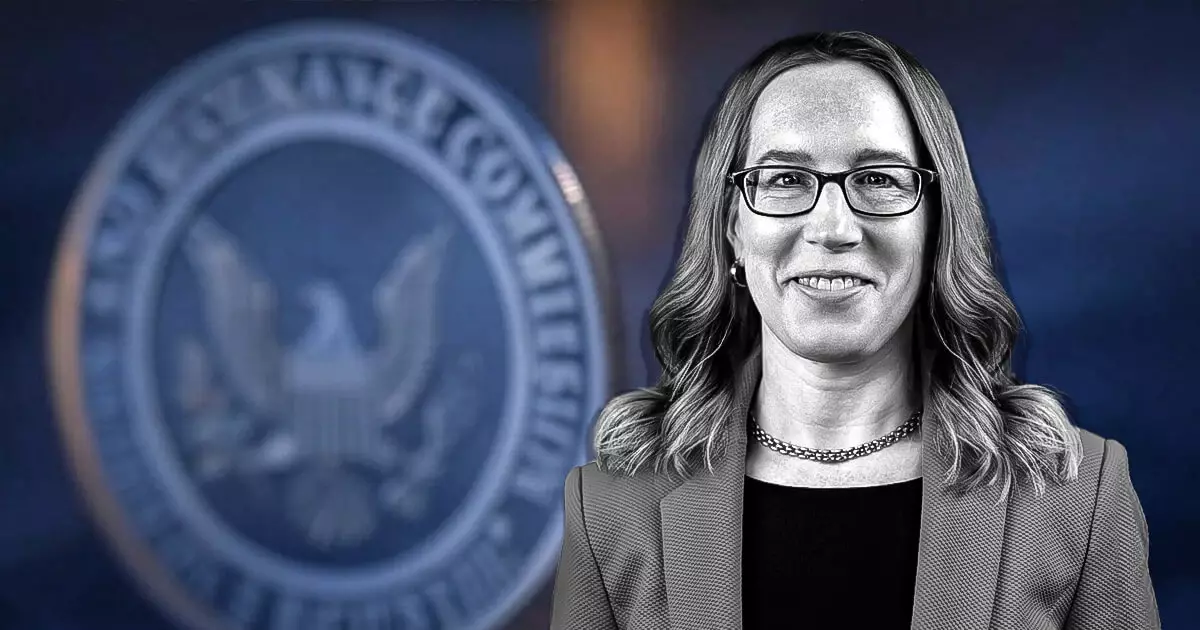In the rapidly evolving world of blockchain technology, the distinction between truly decentralized protocols and those with centralized elements is becoming increasingly blurred. This distinction is not merely academic; it has profound regulatory implications that could reshape the entire landscape of crypto innovation. SEC Commissioner Hester Peirce’s recent comments highlight a growing concern among libertarian-leaning advocates for a balanced approach—one that safeguards innovation without surrendering control to overreaching regulators. The heart of her argument lies in recognizing that immutable smart contracts on decentralized networks should be shielded from regulatory encroachment, while acknowledging that layer-2 solutions with centralized transaction ordering mechanisms pose a different, potentially alarming, threat.
Peirce’s perspective underscores her belief that protocols—at their core—are sets of code that, when maintained on sufficiently decentralized layers, transcend the traditional concept of ownership or control. These are “rules that cannot be owned,” existing in a trustless environment that resists censorship. The risk lies in layer-2 chains that, while building upon layer-1 security, introduce central points of control by employing matching engines that determine transaction sequencing. This shift towards centralized control within a layer-2 architecture undermines the very principles of censorship resistance and decentralization, opening the road to regulatory burdens akin to traditional exchanges.
The Core Regulatory Dilemma: When Centralization Triggers Obligation
The core challenge raised by Peirce revolves around regulatory compliance. If a layer-2 chain employs a matching engine controlled by a single entity to order transactions—particularly securities transactions—it risks being classified as an exchange under existing securities laws. This classification triggers a cascade of onerous obligations, such as registration requirements and licensing—burdens that could stifle innovation and limit the pace at which blockchain firms can operate.
This issue becomes even more critical given the perpetual push for tokenized securities to move onto blockchain infrastructure. As traditional assets intersect with this new realm, the lines between a decentralized protocol and a regulated intermediary are not only blurred—they are threatened. The irony is palpable: solutions designed to improve efficiency and user experience—like centralized sequencing to mitigate front-running—may inadvertently trigger compliance obligations, thus transforming the very environment they seek to improve into a heavily regulated arena.
Peirce’s stance suggests a pragmatic recognition that not all blockchain solutions are created equal. The distinction should lie in the architecture’s degree of decentralization. Fully decentralized smart contracts, which operate transparently on layers of distributed nodes, deserve a safe harbor, shielding them from the regulatory overreach that could curtail their development. Conversely, systems where control is concentrated in a few hands—particularly through matching engines—should not enjoy such leniency, as they resemble traditional intermediaries subject to securities law.
Principles-Based Oversight: Protecting Innovation Without Sacrificing Regulation
Peirce’s balanced approach—favoring principles-based regulation—aims to carve out a space where innovation can flourish without being smothered by compliance constraints. Her belief is that the government should set clear boundaries, distinguishing between autonomous code and entities actively using code to perform regulated activities. This approach seeks to prevent the overregulation of decentralized protocols that, by design, operate without central control or ownership.
However, the tension remains real. As layer-2 chains introduce centralized transaction ordering mechanisms, the regulatory landscape becomes more complex and potentially hostile to innovation. The community’s role in addressing MEV (Maximum Extractable Value) issues—such as front-running—without regulatory interference demonstrates a preferred approach: one based on community-driven solutions rather than heavy-handed regulation. Peirce’s cautious stance reflects a desire to see solutions emerge organically, which could be a double-edged sword if meaningful solutions are slow to materialize or fail to address core risks.
This framework champions a future where developers and entrepreneurs are protected from unnecessary legal risks as long as they uphold the spirit of decentralization. It promotes a functional, pragmatic middle ground: decentralized smart contracts and protocols should be free from registration burdens, while any layer-2 system centralized enough to influence transaction sequencing should be regulated like a traditional financial intermediary. This perspective captures an essential truth—centralization inherently involves risks that the regulatory system must address, especially as the token economy expands into traditional securities.
Assessing the Real-World Impact: Innovation on the Brink of Overreach
The ongoing debate is not solely about legal technicalities; it’s a battle for the soul of blockchain innovation. The technological solutions that improve efficiency, security, or fairness—such as centralized sequencers in layer-2 chains—could, under certain regulatory interpretations, become liabilities. The threat isn’t just theoretical; it’s pragmatic. Increased regulation could turn innovative startups into compliant entities, stifling agility and threatening to push these developments into shadow markets.
On the other hand, the move towards a more regulated environment might be necessary to ensure investor protection, especially as blockchain-based securities become more mainstream. However, the danger lies in adopting a one-size-fits-all approach that fails to distinguish between genuinely decentralized projects and those with centralized control. The latter, resembling traditional intermediaries, should be subject to the same legal obligations—yet overly broad regulations risk incurring the chilling effect of legal uncertainty for everyone involved.
Peirce’s cautious advocacy for community-led solutions and thoughtful regulation could serve as a blueprint for a balanced future. Respect for decentralization, combined with smart oversight that adapts to the technological realities, could sustain blockchain innovation without sacrificing the protections that regulatory frameworks aim to offer. But this balance is fragile, and missteps could tip the scales toward overreach, hampering the industry’s growth while offering little real protection to investors.
—
*Note: The above article reflects a critical, center-right perspective on blockchain regulation, emphasizing the importance of pragmatism, innovation, and respecting decentralization principles while recognizing the necessity of some regulation to mitigate systemic risks.*

